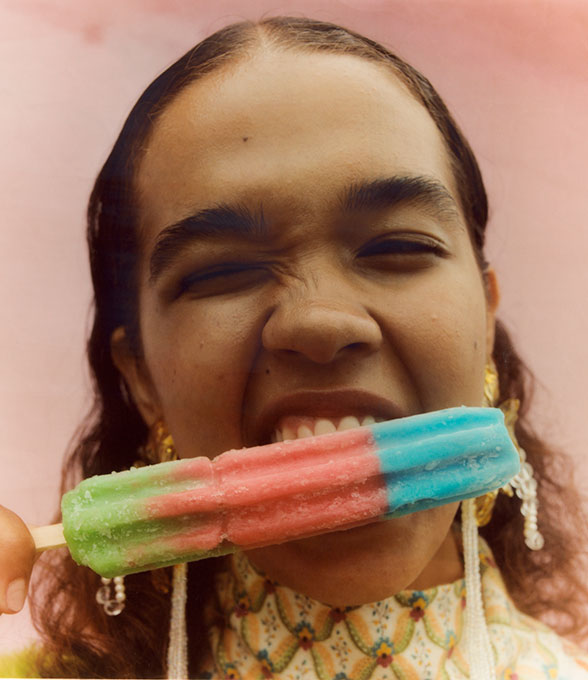designer
Paria Farzaneh

AW 18 Collection
One might expect to find reliefs of Achaemenid soldiers from Persepolis, giant Zoroastrian emblems, and tea kettles emblazoned with the portrait of Nasereddin Shah-e Qajar adorning the walls of a traditional Iranian restaurant, or perhaps the living room of a little old maman bozorg. One would not, however, anticipate such elements to abound in the photo shoots of a critically acclaimed menswear designer who counts Frank Ocean among her fans. But these Iranian elements are anything but coincidental: Paria Farzaneh knows exactly what she’s doing.
A recent graduate in her early twenties, Farzaneh has quickly made a name for herself in the fashion world with her Iranian-inspired designs. Although based in the UK where she was raised, she harbors an unbridled love for her native Iran. She frequently visits her ancestral homeland for inspiration, particularly where patterns, textiles, and native imagery are concerned.
To say the Iranian aspects of Farzaneh’s designs are evident is an understatement. Rather, they serve as a slap in the face and a wake-up call to the richness and beauty of Iranian culture, so often ignored, overshadowed, and misunderstood in the West. Her designs — usually set against khaki tones to further accentuate their intricacy — make frequent use of indigenous patterns such as paisley (or ‘Persian pickles’), as well as motifs seen on Iranian rugs and kalamkari (woodblock) textiles. Some pieces also feature her name written in Persian lettering, as well as that of Iran in its national colors of green, white, and red, just in case the Iranian references weren’t obvious enough.



SS18 Collection

While the patterns and overall motifs are Iran-informed, the choice of silhouettes and garments like hoodies, tracksuits, and baggy trousers, reflects the designer’s urban Western upbringing. As with other notable Iranian designers working outside of Iran (such as San Francisco-based Hushidar Mortezaie), Farzaneh’s works bring together Iranian and European/American aesthetics. To assume that this pairing is something completely new, however, is to ignore the centuries-long Western fascination with Iranian fashion. Persian pickles aside, other staples of Western fashion such as high heels, kaftans, khaki, and seersucker are also of Iranian origin.
Apart from her novel designs, Farzaneh’s attitude towards Iran is also noteworthy. While she certainly makes references to ancient Iran in her shoots, she doesn’t glorify the past (i.e. Iran before the 1979 Revolution) to disparage the present. For one, she uses the ancient, indigenous name of her country and people — Iran and Iranians — rather than ‘Persia’. This is more significant than it may seem, as ‘Persian’, which refers to only one of Iran’s many provinces and but one of the many ethnic Iranian peoples around the world, is today often used as a synonym for Iranian, which many associate with political strife rather than an ancient culture and civilization. She also goes so far as to use the current Iranian flag on her designs, as opposed to the historical Lion and Sun, and has even printed ‘I.R. Iran’ (Islamic Republic of Iran) on one piece from her A/W 18 collection. Farzaneh makes it clear that she’s proud to be Iranian, regardless of contemporary political issues.
By combining a Western upbringing with Iranian roots, Farzaneh has created a harmonious collaboration of cultures rather than a divisive dichotomy.
words by Joobin Bekhrad

Photo Credits
Designer: Paria Farzaneh
SS18 Elliot Jones
AW18 Crown and Owls









